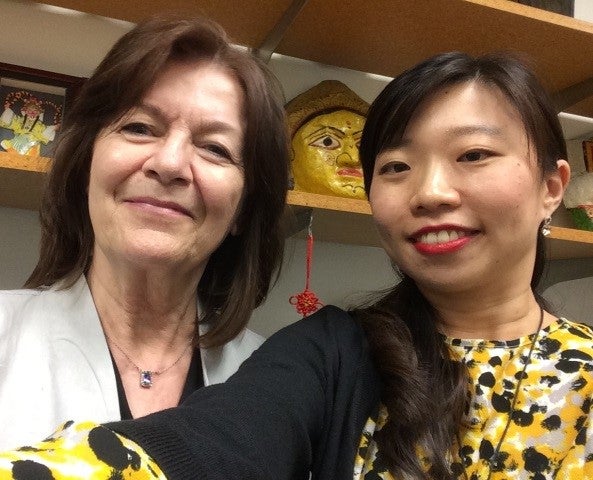As digital media use has exploded in Western nations, transforming communications, news sharing and business practices, it has done the same across Asia — but a pair of ASU researchers say there’s a knowledge gap in the U.S. about how that growth has looked in the East.
To bridge the void, Juliane SchoberSchober is a professor in the School of Historical, Philosophical and Religious Studies and director of the Center for Asian Research. and Pauline CheongCheong is an associate professor in the Hugh Downs School of Human Communication and chair of the Center for Asian Research’s Southeast Asia Council. have helped lead the development of a suite of courses, faculty workshops and research opportunities that they say will help students interact with people from a vast and complex region that includes half of the world’s population and economic production.
“What I really like about this project is that it uses digital media tools to address a digital media need,” Cheong said. “So we’re using this open-source, collaborative platform to bridge the knowledge gap about this growing, dynamic part of the world.”
Schober and Cheong have received a U.S. Department of Education UISFLUndergraduate International Studies and Foreign Language Program grant to fund “Asia Mediated: Interdisciplinary research and teaching innovation.” Pulling together about 20 faculty collaborators at the Center for Asian Research, the project will focus on the political, cultural and social shifts and how they relate to digital media across Asia.
Although digital media plays a huge role in Western and Eastern societies, there are big differences in both types of applications and the ways in which they’re used, Schober and Cheong said.
In the West, they said, people take lots of “selfies.” In the East, people take more “wefies” (a selfie with two or more people). Here, people use Facebook. There, it’s Weibo.
The similarities and differences in the applications for and use of digital media — any information shared online, including news sites, blogs and social media — are important to understand because “their design and use may reflect key cultural values and distinct communication processes, which in turn enact cultural identities, community and notions of authority, leadership and influence,” Cheong said.
ASU professors Juliane Schober and Pauline Cheong snap a wefie.
The project’s application goes beyond communications. Cheong said it’s likely — given Asia’s size and importance — that students from any major will need the skills necessary to engage with that part of the world.
“I teach a class on intercultural communication, and there are several engineering students in it,” Cheong said, as an example. “They take my class because they need to know how they can better engage with cross-cultural teams.”
For Cheong, the time of the project is fitting as ASU diversifies its student population and as more international students come from Asia.
“Asia is a critical hub of online activity, and this has implications for understanding new communication practices that support changes in identity, community and authority practices in Asia and beyond,” she said.
The ubiquity of digital media elevates the project’s importance.
“Digital media has become a part of literacy,” Schober said. “It’s a part of technology that we need to know how to use when we communicate with people from other parts of the world.”
Courses offered through the “Asia Mediated” project are available to all majors and will be searchable in an online, open-source platform that will be collaboratively authored and tagged to enable cross-referencing across key topics for interdisciplinary research and learning. The open-source platform also makes the course curriculum available online for anyone to use, from high school teachers to armchair researchers.
“It’s a very dynamic platform that allows you to find linkages [between subjects] that you can then tailor to your own needs,” said Cheong, who is working on developing a gateway course for the new curriculum.
In addition, “Asia Mediated” will support the creation of a hybrid curriculum for the first two years of Vietnamese language instruction, as well as the creation of an internship program for ASU’s Barrett, the Honors College students to train in research skills about Asian digital media literacies.
More Science and technology

Hack like you 'meme' it
What do pepperoni pizza, cat memes and an online dojo have in common?It turns out, these are all essential elements of a great cybersecurity hacking competition.And experts at Arizona State…

ASU professor breeds new tomato variety, the 'Desert Dew'
In an era defined by climate volatility and resource scarcity, researchers are developing crops that can survive — and thrive — under pressure.One such innovation is the newly released tomato variety…

Science meets play: ASU researcher makes developmental science hands-on for families
On a Friday morning at the Edna Vihel Arts Center in Tempe, toddlers dip paint brushes into bright colors, decorating paper fish. Nearby, children chase bubbles and move to music, while…



